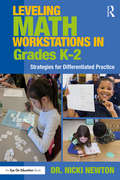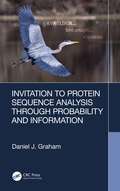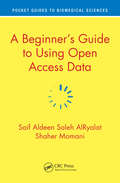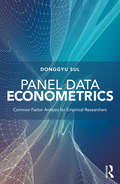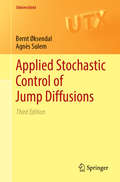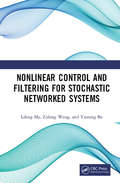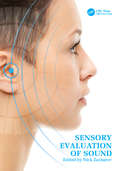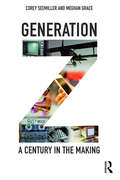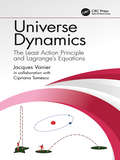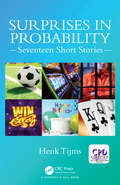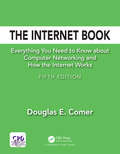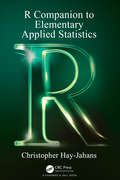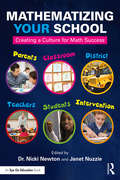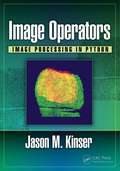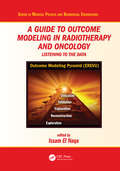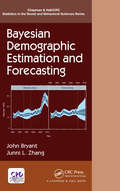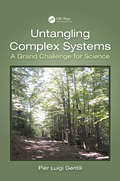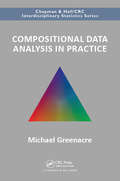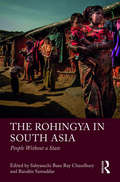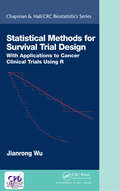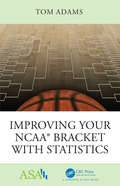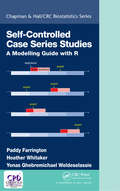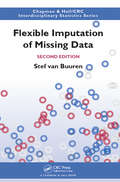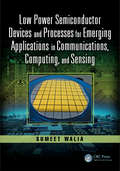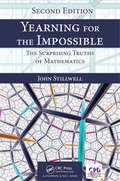- Table View
- List View
Leveling Math Workstations in Grades K–2: Strategies for Differentiated Practice
by Nicki NewtonIn this book from bestselling author Dr. Nicki Newton, you’ll learn how to level math workstations to engage K–2 students in meaningful, purposeful, rigorous practice. We know students don’t learn at the same pace, so how do we take into account where they are and differentiate instruction? Dr. Nicki has the answers, showing how leveled workstations are key in the formative years, how they help students operate in their zone of proximal development and how we can use them to help students progress to higher levels of math achievement. Topics include: Understanding the framework for leveled workstations Making sure workstations are rigorous and not just providing busy work Building your stations in key areas such as counting, numbers, place value, fluency and word problems Keeping students accountable, and knowing where they are in their learning trajectory Each chapter offers specific examples, activities and tools. There is also a clear, step-by-step action plan to help you implement the ideas immediately in your own classroom.
Invitation to Protein Sequence Analysis Through Probability and Information
by Daniel J. GrahamThis book explores the remarkable information correspondences and probability structures of proteins. Correspondences are pervasive in biochemistry and bioinformatics: proteins share homologies, folding patterns, and mechanisms. Probability structures are just as paramount: folded state graphics reflect Angstrom-scale maps of electron density. The author explores protein sequences (primary structures), both individually and in sets (systems) with the help of probability and information tools. This perspective will enhance the reader’s knowledge of how an important class of molecules is designed and put to task in natural systems, and how we can approach class members in hands-on ways.
A Beginner’s Guide to Using Open Access Data (Pocket Guides to Biomedical Sciences)
by Saif Aldeen AlRyalat Shaher MomaniOpen Access Data is emerging as a source for cutting edge scholarship. This concise book provides guidance from generating a research idea to publishing results. Both young researchers and well-established scholars can use this book to upgrade their skills with respect to emerging data sources, analysis, and even post-publishing promotion. At the end of each chapter, a tutorial simulates a real example, allowing readers to apply what they learned about accessing open data, and analyzing this data to reach the results. This book can be of use by established researchers analyzing data, publishing, and actively promoting ongoing and research. Key selling features: Describes the steps, from A-Z, for doing open data research Includes interactive tutorials following each chapter Provides guidelines for readers so that they can use their own accessed open data Reviews recent software and websites promoting and enabling open data research Supplements websites which update recent open data sources
Panel Data Econometrics: Common Factor Analysis for Empirical Researchers
by Donggyu SulIn the last 20 years, econometric theory on panel data has developed rapidly, particularly for analyzing common behaviors among individuals over time. Meanwhile, the statistical methods employed by applied researchers have not kept up-to-date. This book attempts to fill in this gap by teaching researchers how to use the latest panel estimation methods correctly. Almost all applied economics articles use panel data or panel regressions. However, many empirical results from typical panel data analyses are not correctly executed. This book aims to help applied researchers to run panel regressions correctly and avoid common mistakes. The book explains how to model cross-sectional dependence, how to estimate a few key common variables, and how to identify them. It also provides guidance on how to separate out the long-run relationship and common dynamic and idiosyncratic dynamic relationships from a set of panel data. Aimed at applied researchers who want to learn about panel data econometrics by running statistical software, this book provides clear guidance and is supported by a full range of online teaching and learning materials. It includes practice sections on MATLAB, STATA, and GAUSS throughout, along with short and simple econometric theories on basic panel regressions for those who are unfamiliar with econometric theory on traditional panel regressions.
Applied Stochastic Control of Jump Diffusions (Universitext)
by Bernt Øksendal Agnès SulemHere is a rigorous introduction to the most important and useful solution methods of various types of stochastic control problems for jump diffusions and its applications. Discussion includes the dynamic programming method and the maximum principle method, and their relationship. The text emphasises real-world applications, primarily in finance. Results are illustrated by examples, with end-of-chapter exercises including complete solutions. The 2nd edition adds a chapter on optimal control of stochastic partial differential equations driven by Lévy processes, and a new section on optimal stopping with delayed information. Basic knowledge of stochastic analysis, measure theory and partial differential equations is assumed.
Nonlinear Control and Filtering for Stochastic Networked Systems
by Lifeng Ma Zidong Wang Yuming BoIn this book, control and filtering problems for several classes of stochastic networked systems are discussed. In each chapter, the stability, robustness, reliability, consensus performance, and/or disturbance attenuation levels are investigated within a unified theoretical framework. The aim is to derive the sufficient conditions such that the resulting systems achieve the prescribed design requirements despite all the network-induced phenomena. Further, novel notions such as randomly occurring sensor failures and consensus in probability are discussed. Finally, the theories/techniques developed are applied to emerging research areas. Key Features Unifies existing and emerging concepts concerning stochastic control/filtering and distributed control/filtering with an emphasis on a variety of network-induced complexities Includes concepts like randomly occurring sensor failures and consensus in probability (with respect to time-varying stochastic multi-agent systems) Exploits the recursive linear matrix inequality approach, completing the square method, Hamilton-Jacobi inequality approach, and parameter-dependent matrix inequality approach to handle the emerging mathematical/computational challenges Captures recent advances of theories, techniques, and applications of stochastic control as well as filtering from an engineering-oriented perspective Gives simulation examples in each chapter to reflect the engineering practice
Sensory Evaluation of Sound
by Nick ZacharovSensory Evaluation of Sound provides a detailed review of the latest sensory evaluation techniques, specifically applied to the evaluation of sound and audio. This three-part book commences with an introduction to the fundamental role of sound and hearing, which is followed by an overview of sensory evaluation methods and associated univariate and multivariate statistical analysis techniques. The final part of the book provides several chapters with concrete real-world applications of sensory evaluation ranging from telecommunications, hearing aids design and binaural sound, via the latest research in concert hall acoustics through to audio-visual interaction. Aimed at the engineer, researcher, university student or manager the book gives insight into the advanced methods for the sensory evaluation with many application examples. Introduces the fundamental of hearing and the value of sound Provides a firm theoretical basis for advanced techniques in sensory evaluation of sound that are then illustrated with concrete examples from university research through to industrial product development Includes chapters on sensory evaluation practices and methods as well as univariate and multivariate statistical analysis Six application chapters covering a wide range of concrete sensory evaluation study examples including insight into audio-visual assessment Includes data analysis with several associated downloadable datasets Provides extensive references to the existing research literature, text books and standards
Generation Z: A Century in the Making
by Corey Seemiller Meghan GraceNo other generation in history has received as much coverage as the Millennial generation. Books, Google searches, blogs, and news articles are everywhere about them. Yet, Generation Z is comprised of our youth and young adults today and has received very little attention comparatively. Those in Generation Z are among our youngest consumers, students, colleagues, constituents, voters, and neighbors. Being able to better understand who they are and how they see the world can be helpful in effectively working with, teaching, supervising, and leading them. Generation Z: A Century in the Making offers insight into nearly every aspect of the lives of those in Generation Z, including a focus on their career aspirations, religious beliefs and practices, entertainment and hobbies, social concerns, relationships with friends and family, health and wellness, money management, civic engagement, communication styles, political ideologies, technology use, and educational preferences. Drawing from an unprecedented number of studies with higher education research institutions, market research firms such as Pew and Census, other generational researchers and industry leaders, this is the authoritative defining work on Generation Z that market researchers, consumer behaviour specialists, and employers sorely need – and it is a fascinating read for anyone interested in the sociology of generations.
Universe Dynamics: The Least Action Principle and Lagrange’s Equations
by Jacques Vanier Cipriana Tomescu (Mandache)Brought together in one focused and exclusive treatment, this book provides an elementary introduction to the important role and use of the least action principle and the resulting Lagrange’s equations in the analysis of the laws that govern the universe. It is an ideal complimentary resource to accompany undergraduate courses and textbooks on classical mechanics. Features: Uses mathematics accessible to beginners Brings together the Principle of Least Action, Lagrange's equations, and variational principles in mechanics in one cohesive text Written in a clear and easy-to-understand manner
Surprises in Probability: Seventeen Short Stories
by Henk TijmsThis book brings together a variety of probability applications through entertaining stories that will appeal to a broad readership. What are the best stopping rules for the dating problem? What can Bayes’ formula tell us about the chances of a Champions League draw for soccer teams being rigged? How could syndicates win millions of lottery dollars by buying a multitude of tickets at the right time? What’s the best way to manage your betting bankroll in a game in which you have an edge? How to use probability to debunk quacks and psychic mediums? How can the Monte Carlo simulation be used to solve a wide variety of probability problems? Are seven riffle shuffles of a standard deck of 52 playing cards enough for randomness? Provides seventeen engaging stories that illustrate ideas in probability. Written so as to be suitable for those with minimal mathematical background. Stories can be read independently. Can be used as examples and exercises for teaching introductory probability. These questions and many more are addressed in seventeen short chapters that can be read independently. The engaging stories are instructive and demonstrate valuable probabilistic ideas. They offer students material that they most likely don’t learn in class, and offer teachers a new way of teaching their subject.
The Internet Book: Everything You Need to Know about Computer Networking and How the Internet Works
by Douglas E. ComerThe Internet Book, Fifth Edition explains how computers communicate, what the Internet is, how the Internet works, and what services the Internet offers. It is designed for readers who do not have a strong technical background — early chapters clearly explain the terminology and concepts needed to understand all the services. It helps the reader to understand the technology behind the Internet, appreciate how the Internet can be used, and discover why people find it so exciting. In addition, it explains the origins of the Internet and shows the reader how rapidly it has grown. It also provides information on how to avoid scams and exaggerated marketing claims. The first section of the book introduces communication system concepts and terminology. The second section reviews the history of the Internet and its incredible growth. It documents the rate at which the digital revolution occurred, and provides background that will help readers appreciate the significance of the underlying design. The third section describes basic Internet technology and capabilities. It examines how Internet hardware is organized and how software provides communication. This section provides the foundation for later chapters, and will help readers ask good questions and make better decisions when salespeople offer Internet products and services. The final section describes application services currently available on the Internet. For each service, the book explains both what the service offers and how the service works. About the Author Dr. Douglas Comer is a Distinguished Professor at Purdue University in the departments of Computer Science and Electrical and Computer Engineering. He has created and enjoys teaching undergraduate and graduate courses on computer networks and Internets, operating systems, computer architecture, and computer software. One of the researchers who contributed to the Internet as it was being formed in the late 1970s and 1980s, he has served as a member of the Internet Architecture Board, the group responsible for guiding the Internet’s development. Prof. Comer is an internationally recognized expert on computer networking, the TCP/IP protocols, and the Internet, who presents lectures to a wide range of audiences. In addition to research articles, he has written a series of textbooks that describe the technical details of the Internet. Prof. Comer’s books have been translated into many languages, and are used in industry as well as computer science, engineering, and business departments around the world. Prof. Comer joined the Internet project in the late 1970s, and has had a high-speed Internet connection to his home since 1981. He wrote this book as a response to everyone who has asked him for an explanation of the Internet that is both technically correct and easily understood by anyone. An Internet enthusiast, Comer displays INTRNET on the license plate of his car.
R Companion to Elementary Applied Statistics
by Christopher Hay-JahansThe R Companion to Elementary Applied Statistics includes traditional applications covered in elementary statistics courses as well as some additional methods that address questions that might arise during or after the application of commonly used methods. Beginning with basic tasks and computations with R, readers are then guided through ways to bring data into R, manipulate the data as needed, perform common statistical computations and elementary exploratory data analysis tasks, prepare customized graphics, and take advantage of R for a wide range of methods that find use in many elementary applications of statistics. Features: Requires no familiarity with R or programming to begin using this book. Can be used as a resource for a project-based elementary applied statistics course, or for researchers and professionals who wish to delve more deeply into R. Contains an extensive array of examples that illustrate ideas on various ways to use pre-packaged routines, as well as on developing individualized code. Presents quite a few methods that may be considered non-traditional, or advanced. Includes accompanying carefully documented script files that contain code for all examples presented, and more. R is a powerful and free product that is gaining popularity across the scientific community in both the professional and academic arenas. Statistical methods discussed in this book are used to introduce the fundamentals of using R functions and provide ideas for developing further skills in writing R code. These ideas are illustrated through an extensive collection of examples. About the Author: Christopher Hay-Jahans received his Doctor of Arts in mathematics from Idaho State University in 1999. After spending three years at University of South Dakota, he moved to Juneau, Alaska, in 2002 where he has taught a wide range of undergraduate courses at University of Alaska Southeast.
Mathematizing Your School: Creating a Culture for Math Success
by Nicki Newton Janet NuzzieLearn the secrets to getting your entire school excited about math! This book from acclaimed author Dr. Nicki Newton and experienced instructional specialist Janet Nuzzie shows you how to integrate engaging math instruction at every level, from the small group project to the school-wide assembly. With contributions from math coaches, district leaders, and classroom teachers, this book will give you the practical tools you need to boost student proficiency, encourage collaboration between staff members, and make math an important part of school life. You’ll also learn how to: Create a safe and inviting environment for mathematics instruction; Devote adequate amounts of instructional time to help students develop their skill set as proficient mathematicians; Use real-world contexts and hands-on instruction to boost engagement; Give students the tools and opportunities to be confident, to question, to take risks, and to make mistakes; And much much more!
Image Operators: Image Processing in Python
by Jason M. KinserFor decades, researchers have been developing algorithms to manipulate and analyze images. From this, a common set of image tools now appear in many high-level programming languages. Consequently, the amount of coding required by a user has significantly lessened over the years. While the libraries for image analysis are coalescing to a common toolkit, the language of image analysis has remained stagnant. Often, textual descriptions of an analytical protocol consume far more real estate than does the computer code required to execute the processes. Furthermore, the textual explanations are sometimes vague or incomplete. This book offers a precise mathematical language for the field of image processing. Defined operators correspond directly to standard library routines, greatly facilitating the translation between mathematical descriptions and computer script. This text is presented with Python 3 examples. This text will provide a unified language for image processing Provides the theoretical foundations with accompanied Python® scripts to precisely describe steps in image processing applications Linkage between scripts and theory through operators will be presented All chapters will contain theories, operator equivalents, examples, Python® codes, and exercises
A Guide to Outcome Modeling In Radiotherapy and Oncology: Listening to the Data (Series in Medical Physics and Biomedical Engineering)
by Issam El NaqaThis book explores outcome modeling in cancer from a data-centric perspective to enable a better understanding of complex treatment response, to guide the design of advanced clinical trials, and to aid personalized patient care and improve their quality of life. It contains coverage of the relevant data sources available for model construction (panomics), ranging from clinical or preclinical resources to basic patient and treatment characteristics, medical imaging (radiomics), and molecular biological markers such as those involved in genomics, proteomics and metabolomics. It also includes discussions on the varying methodologies for predictive model building with analytical and data-driven approaches. This book is primarily intended to act as a tutorial for newcomers to the field of outcome modeling, as it includes in-depth how-to recipes on modeling artistry while providing sufficient instruction on how such models can approximate the physical and biological realities of clinical treatment. The book will also be of value to seasoned practitioners as a reference on the varying aspects of outcome modeling and their current applications. Features: Covers top-down approaches applying statistical, machine learning, and big data analytics and bottom-up approaches using first principles and multi-scale techniques, including numerical simulations based on Monte Carlo and automata techniques Provides an overview of the available software tools and resources for outcome model development and evaluation, and includes hands-on detailed examples throughout Presents a diverse selection of the common applications of outcome modeling in a wide variety of areas: treatment planning in radiotherapy, chemotherapy and immunotherapy, utility-based and biomarker applications, particle therapy modeling, oncological surgery, and the design of adaptive and SMART clinical trials
Bayesian Demographic Estimation and Forecasting (Chapman & Hall/CRC Statistics in the Social and Behavioral Sciences)
by John Bryant Junni L. ZhangBayesian Demographic Estimation and Forecasting presents three statistical frameworks for modern demographic estimation and forecasting. The frameworks draw on recent advances in statistical methodology to provide new tools for tackling challenges such as disaggregation, measurement error, missing data, and combining multiple data sources. The methods apply to single demographic series, or to entire demographic systems. The methods unify estimation and forecasting, and yield detailed measures of uncertainty. The book assumes minimal knowledge of statistics, and no previous knowledge of demography. The authors have developed a set of R packages implementing the methods. Data and code for all applications in the book are available on www.bdef-book.com. "This book will be welcome for the scientific community of forecasters…as it presents a new approach which has already given important results and which, in my opinion, will increase its importance in the future." ~Daniel Courgeau, Institut national d'études démographiques
Untangling Complex Systems: A Grand Challenge for Science
by Pier Luigi GentiliComplex Systems are natural systems that science is unable to describe exhaustively. Examples of Complex Systems are both unicellular and multicellular living beings; human brains; human immune systems; ecosystems; human societies; the global economy; the climate and geology of our planet. This book is an account of a marvelous interdisciplinary journey the author made to understand properties of the Complex Systems. He has undertaken his trip, equipped with the fundamental principles of physical chemistry, in particular, the Second Law of Thermodynamics that describes the spontaneous evolution of our universe, and the tools of Non-linear dynamics. By dealing with many disciplines, in particular, chemistry, biology, physics, economy, and philosophy, the author demonstrates that Complex Systems are intertwined networks, working in out-of-equilibrium conditions, which exhibit emergent properties, such as self-organization phenomena and chaotic behaviors in time and space.
Compositional Data Analysis in Practice (Chapman & Hall/CRC Interdisciplinary Statistics)
by Michael GreenacreCompositional Data Analysis in Practice is a user-oriented practical guide to the analysis of data with the property of a constant sum, for example percentages adding up to 100%. Compositional data can give misleading results if regular statistical methods are applied, and are best analysed by first transforming them to logarithms of ratios. This book explains how this transformation affects the analysis, results and interpretation of this very special type of data. All aspects of compositional data analysis are considered: visualization, modelling, dimension-reduction, clustering and variable selection, with many examples in the fields of food science, archaeology, sociology and biochemistry, and a final chapter containing a complete case study using fatty acid compositions in ecology. The applicability of these methods extends to other fields such as linguistics, geochemistry, marketing, economics and finance. R Software The following repository contains data files and R scripts from the book https://github.com/michaelgreenacre/CODAinPractice . The R package easyCODA, which accompanies this book, is available on CRAN -- note that you should have version 0.25 or higher. The latest version of the package will always be available on R-Forge and can be installed from R with this instruction: install.packages("easyCODA", repos="http://R-Forge.R-project.org").
The Rohingya in South Asia: People Without a State
by Sabyasachi Basu Ray Chaudhury Ranabir SamaddarThe Rohingya of Myanmar are one of the world’s most persecuted minority populations without citizenship. After the latest exodus from Myanmar in 2017, there are now more than half a million Rohingya in Bangladesh living in camps, often in conditions of abject poverty, malnutrition and without proper access to shelter or work permits. Some of them are now compelled to take to the seas in perilous journeys to the Southeast Asian countries in search of a better life. They are now asked to go back to Myanmar, but without any promise of citizenship or an end to discrimination. This book looks at the Rohingya in the South Asian region, primarily India and Bangladesh. It explores the broader picture of the historical and political dimensions of the Rohingya crisis, and examines subjects of statelessness, human rights and humanitarian protection of these victims of forced migration. Further, it chronicles the actual process of emergence of a stateless community – the transformation of a national group into a stateless existence without basic rights.
Statistical Methods for Survival Trial Design: With Applications to Cancer Clinical Trials Using R (Chapman & Hall/CRC Biostatistics Series)
by Jianrong WuStatistical Methods for Survival Trial Design: With Applications to Cancer Clinical Trials Using R provides a thorough presentation of the principles of designing and monitoring cancer clinical trials in which time-to-event is the primary endpoint. Traditional cancer trial designs with time-to-event endpoints are often limited to the exponential model or proportional hazards model. In practice, however, those model assumptions may not be satisfied for long-term survival trials. This book is the first to cover comprehensively the many newly developed methodologies for survival trial design, including trial design under the Weibull survival models; extensions of the sample size calculations under the proportional hazard models; and trial design under mixture cure models, complex survival models, Cox regression models, and competing-risk models. A general sequential procedure based on the sequential conditional probability ratio test is also implemented for survival trial monitoring. All methodologies are presented with sufficient detail for interested researchers or graduate students.
Improving Your NCAA® Bracket with Statistics (ASA-CRC Series on Statistical Reasoning in Science and Society)
by Tom AdamsTwenty-four million people wager nearly $3 billion on college basketball pools each year, but few are aware that winning strategies have been developed by researchers at Harvard, Yale, and other universities over the past two decades. Bad advice from media sources and even our own psychological inclinations are often a bigger obstacle to winning than our pool opponents. Profit opportunities are missed and most brackets submitted to pools don’t have a breakeven chance to win money before the tournament begins. Improving Your NCAA® Bracket with Statistics is both an easy-to-use tip sheet to improve your winning odds and an intellectual history of how statistical reasoning has been applied to the bracket pool using standard and innovative methods. It covers bracket improvement methods ranging from those that require only the information in the seeded bracket to sophisticated estimation techniques available via online simulations. Included are: Prominently displayed bracket improvement tips based on the published research A history of the origins of the bracket pool A history of bracket improvement methods and their results in play Historical sketches and background information on the mathematical and statistical methods that have been used in bracket analysis A source list of good bracket pool advice available each year that seeks to be comprehensive Warnings about common bad advice that will hurt your chances Tom Adams’ work presenting bracket improvement methods has been featured in the New York Times, Sports Illustrated, and SmartMoney magazine.
Self-Controlled Case Series Studies: A Modelling Guide with R (Chapman & Hall/CRC Biostatistics Series)
by Paddy Farrington Heather Whitaker Yonas Ghebremichael WeldeselassieSelf-Controlled Case Series Studies: A Modelling Guide with R provides the first comprehensive account of the self-controlled case series (SCCS) method, a statistical technique for investigating associations between outcome events and time-varying exposures. The method only requires information from individuals who have experienced the event of interest, and automatically controls for multiplicative time-invariant confounders, even when these are unmeasured or unknown. It is increasingly being used in epidemiology, most frequently to study the safety of vaccines and pharmaceutical drugs. Key features of the book include: A thorough yet accessible description of the SCCS method, with mathematical details provided in separate starred sections. Comprehensive discussion of assumptions and how they may be verified. A detailed account of different SCCS models, extensions of the SCCS method, and the design of SCCS studies. Extensive practical illustrations and worked examples from epidemiology. Full computer code from the associated R package SCCS, which includes all the data sets used in the book. The book is aimed at a broad range of readers, including epidemiologists and medical statisticians who wish to use the SCCS method, and also researchers with an interest in statistical methodology. The three authors have been closely involved with the inception, development, popularisation and programming of the SCCS method.
Flexible Imputation of Missing Data, Second Edition (Chapman & Hall/CRC Interdisciplinary Statistics)
by Stef van BuurenMissing data pose challenges to real-life data analysis. Simple ad-hoc fixes, like deletion or mean imputation, only work under highly restrictive conditions, which are often not met in practice. Multiple imputation replaces each missing value by multiple plausible values. The variability between these replacements reflects our ignorance of the true (but missing) value. Each of the completed data set is then analyzed by standard methods, and the results are pooled to obtain unbiased estimates with correct confidence intervals. Multiple imputation is a general approach that also inspires novel solutions to old problems by reformulating the task at hand as a missing-data problem. This is the second edition of a popular book on multiple imputation, focused on explaining the application of methods through detailed worked examples using the MICE package as developed by the author. This new edition incorporates the recent developments in this fast-moving field. This class-tested book avoids mathematical and technical details as much as possible: formulas are accompanied by verbal statements that explain the formula in accessible terms. The book sharpens the reader’s intuition on how to think about missing data, and provides all the tools needed to execute a well-grounded quantitative analysis in the presence of missing data.
Low Power Semiconductor Devices and Processes for Emerging Applications in Communications, Computing, and Sensing (Devices, Circuits, and Systems)
by Sumeet WaliaThe book addresses the need to investigate new approaches to lower energy requirement in multiple application areas and serves as a guide into emerging circuit technologies. It explores revolutionary device concepts, sensors, and associated circuits and architectures that will greatly extend the practical engineering limits of energy-efficient computation. The book responds to the need to develop disruptive new system architectures and semiconductor processes aimed at achieving the highest level of computational energy efficiency for general purpose computing systems. Discusses unique technologies and material only available in specialized journal and conferences. Covers emerging materials and device structures, such as ultra-low power technologies, nanoelectronics, and microsystem manufacturing. Explores semiconductor processing and manufacturing, device design, and performance. Contains practical applications in the engineering field, as well as graduate studies. Written by international experts from both academia and industry.
Yearning for the Impossible: The Surprising Truths of Mathematics, Second Edition
by John StillwellYearning for the Impossible: The Surprising Truth of Mathematics, Second Edition explores the history of mathematics from the perspective of the creative tension between common sense and the "impossible" as the author follows the discovery or invention of new concepts that have marked mathematical progress. The author puts these creations into a broader context involving related "impossibilities" from art, literature, philosophy, and physics. This new edition contains many new exercises and commentaries, clearly discussing a wide range of challenging subjects.
